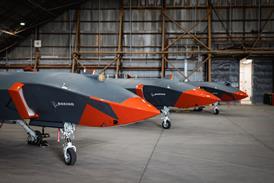The US Navy (USN) has conducted tests that saw sonobuoys deployed from the Sikorsky CH-53E heavy-lift helicopter, offering a new capability for the type.
The work took place at a range in the Atlantic Ocean off the coast of Virginia, with crews deploying sonobuoys by hand, according to the US Naval Air Systems Command (NAVAIR).

A key focus was ensuring that sonobuoys could clear the rotorcraft after launch. Work will also be undertaken to explore the launch of sonobuoys from the new CH-53K, the replacement for the CH-53E in US Marine Corps (USMC) service.
“The H-53 is purpose-built to carry heavy loads, but that’s not the limit of our operational relevance,” says USMC Colonel Kate Fleeger, programme manager in the Heavy Lift Helicopters Program Office.
“This test is just one example of the untapped capabilities of the H-53. Future payloads and the evolution of the H-53 in the battlespace are limited only by our imagination.”
Developing an anti-submarine warfare (ASW) support capability for the CH-53 likely reflects concerns about enemy submarines in the new era of great power competition with China and Russia, both of which have formidable submarine capabilities.
NAVAIR said nothing about the H-53 monitoring the buoys itself. This would likely be done by other platforms, such as the Sikorsky MH-60R ASW helicopter, the Boeing P-8A Poseidon maritime patrol aircraft, unmanned air vehicles, or USN warships.
Given that USN amphibious assault groups regularly deploy with the CH-53, the ability to deploy sonobuoys from the helicopter could greatly assist the size of sonobuoy fields that a task force can create. It would also allow large numbers of sonobuoys to be arrayed quickly.


























